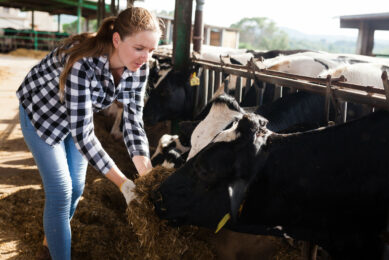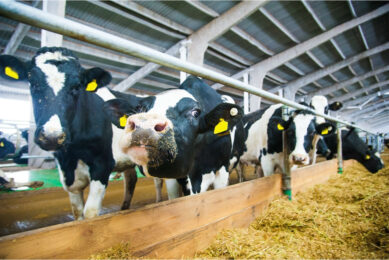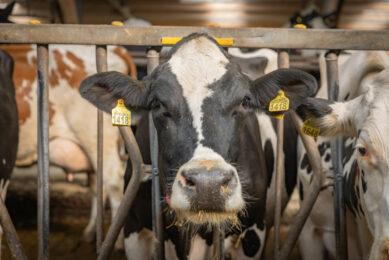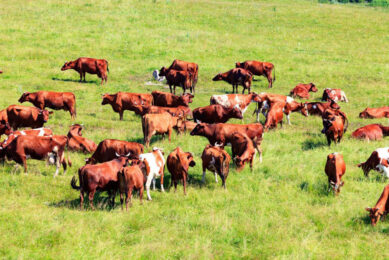Reducing Salmonella and its impact on the poultry industry
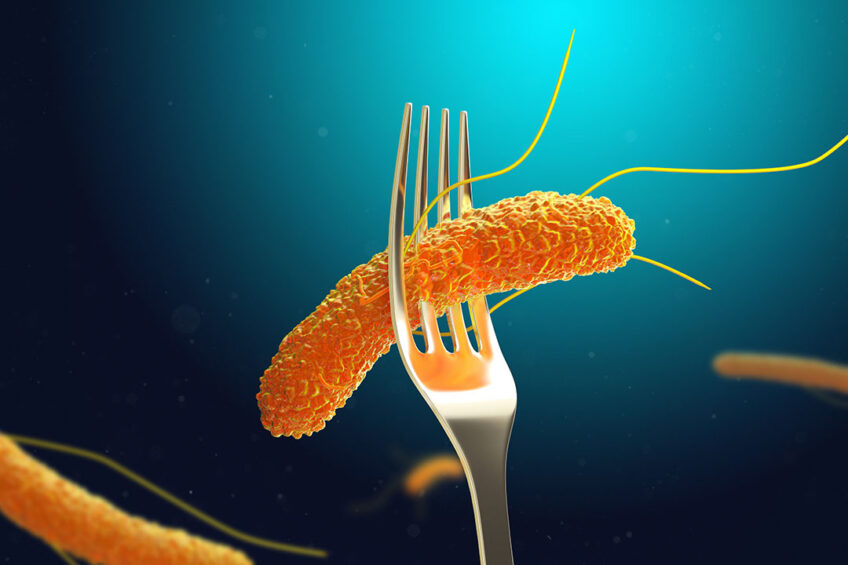
The gut is the most important organ when it comes to converting expensive feed into meat. Salmonella can contaminate and colonise the gut in poultry, it is therefore vital that Salmonella be reduced at all stages of production. Trials were carried out in broilers and layers to evaluate the impact of yeast fractions on Salmonella.
Salmonella is a gram-negative rod-shaped pathogen responsible for approximately 1 million foodborne illnesses per year in the US and 91,000 in Europe. Salmonella contamination is a global issue in poultry production. Interventions are applied in the processing plant to reduce the level of contamination of poultry products.

Reducing Salmonella at production level
The types of interventions that are permitted and implemented vary greatly based on the country of production and product class. In all aspects of poultry production, it is essential to reduce the level of Salmonella that enters the processing plant from the farm. The lower the pathogen load that enters the processing plant the easier it is to provide a safe and wholesome product to the market. The farm is a complex environment and to successfully reduce Salmonella at the production level it is critical to attack all stages of production; breeders, hatchery, biosecurity, water quality, farm management, feed mill management, feed additives and more. A series of trials were conducted in broilers and layers to demonstrate the impact of Safmannan (yeast fraction) on Salmonella.
The product has been shown to reliably reduce the prevalence or enumeration of Salmonella in chickens making it a viable part of a programme for reducing risk of Salmonella contamination.
Trial 1: Salmonella Heidelberg – Broilers
This study was conducted to evaluate the effectiveness of different levels of Safmannan selected yeast fraction or a commercial yeast culture in reducing the direct colonisation and horizontal transmission of S.Heidelberg in broiler chickens. At day of hatch, 2,000 broiler chicks were randomly assigned into 5 treatment groups with 8 replicate pens per treatment. Birds were challenged with nalidixic acid-resistant S. Heidelberg either by direct inoculation of 107 cfu orally or by horizontal transmission through inoculated penmates. The yeast fraction at 500 ppm decreased Salmonella prevalence in the total infected birds (seeders and contacts) to 41.7% as compared to 54.2% in the untreated birds. The effect of the yeast fraction in reducing prevalence of positive birds was even greater when only the contact birds were considered; 32.5% in contact birds treated with 500 ppm as compared to 57.5% in the untreated group (P = 0.09). Furthermore, enumeration of S. Heidelberg colonisation level in the caecum using the most probable number (MPN) method showed that using the product at 500 ppm reduced the bacterial load in the caecum of positive birds to 1.7 MPN/g as compared to 2.7 MPN/g in the control group (Figure 1). The reduction was statistically significant (P = 0.04) in the contact birds. The same effect was not seen in the yeast culture treatment. The contact birds are more representative of the way birds are exposed to Salmonella in the field, it is rare that a chicken will encounter 107 cfu of a single organism in one moment. It is much more likely that a bird will encounter a pathogen mixed with a milieu of other organisms in the environment.
Figure 1 – Box plots for Salmonella MPN for culture-positive samples by treatment.

Trial 2: Salmonella Enteritidis – Layers
Caecal prevalence of birds challenged with Salmonella Enteritidis showed a significant reduction in positive caeca in treatment compared to the control. A total of 24 Hy-Line W36 layers were challenged with S. Enteritidis, 12 birds were fed a basal diet only control and 12 birds were fed the basal diet plus treatment of 500 ppm Safmannan. At one-week post challenge, caecal prevalence and enumeration of SE were recorded. Caecal prevalence of SE was 70.7% lower (p<0.089 value) in the treatment birds compared to the control. a significant reduction of salmonella positive hens is a biologically important result indicating that the yeast fraction can impact levels of>S. Enteritidis in the caeca and consequently the environmental load.
Trial 3: Salmonella Enteritidis – Layers
A total of 60 Hy-Line hens aged 56 weeks were placed in individual cages and fed a mash diet containing one of the following treatments, control, Microsaf (a Bacillus probiotic) and the yeast fraction. At 60 weeks of age all hens were challenged orally with 7 x 107 CFU/bird of S. Enteritidis. At 61 weeks of age, the caeca were aseptically removed and cultured for S. Enteritidis prevalence and number by the Most Probable Number (MPN) method. There was no significant difference in prevalence of S. Enteritidis between the control and any treatments. The control birds had 3.35 log10 MPN/g of S. Enteritidis detected in the caeca. The probiotic group had 1.90 MPN/g, a reduction of 1.44 (p<0.05) and the yeast fraction group had 1.84mpn g a reduction of 1.51 (p><0.05). both groups significantly reduced the amount of>S. Enteritidis in the caeca of laying hens.
Trial 4: Salmonella Typhimurium – Layers
A total of 24 Hy-Line W36 layers were challenged with S. Typhimurium at USDA- ARS Southern Plains. 12 birds were fed a basal diet only (control) and 12 birds fed the basal diet plus treatment of 500 ppm Safmannan. All the birds were orally gavaged with 8.7×109 CFU nalidixic acid/ novobiocin-resistant S. Typhimurium. At one-week post challenge, caecal prevalence and enumeration were recorded. Caecal counts on birds challenged with S. Typhimurium showed a final count of 4.71 log10 cfu/mL, while the yeast fraction treatment sample counts were 3.41 log10 cfu/mL (P=0.015). A 1 log reduction of caecal Salmonella is a biologically important result indicating that the yeast fraction can impact levels of S. Typhimurium in laying hens.
Trial 5: Natural Challenge – Broilers
Two commercial broiler farms each containing four houses were selected from a poultry integrator. Two houses from each farm were designated as control and two as treatment. The control diet contained a yeast culture, a proprietary additive blend, a Bacillus probiotic, and butyric acid. The treatment diet replaced the yeast culture and additive blend with Safmannan. 20 caecal samples per house were taken at random post evisceration at the processing plant, cold packed and submitted for prevalence and enumeration of Salmonella.
Figure 2 – Average of 0.72 log reduction of Salmonella in the caeca.

On farm 1, the yeast fraction treatment houses had 0 Salmonella detected in the caeca compared to 10 positives in the control houses with an average count of 0.96 log cfu/g (p<0.05). farm 2 had no salmonella detected in the caeca (>Figure 2). The yeast fraction treatment significantly reduced Salmonella contamination while reducing the cost of the diets (US$ 2.78 saved per ton of feed) and maintaining performance. These studies show the yeast fraction can help reduce Salmonella in the poultry gut, including S. Enteritidis, S. Heidelberg and S. Typhimurium. An average of 1 log cfu/gram of gut content reduction was observed in different trials, meaning the contamination risk on carcasses at slaughterhouse or eggs can be decreased. Supplementing the yeast fraction into the diet can be an essential part of the strategies to reduce foodborne diseases in humans due to Salmonella contamination in poultry products.
Author: Paul Price, North America Poultry Manager at Phileo by Lesaffre



